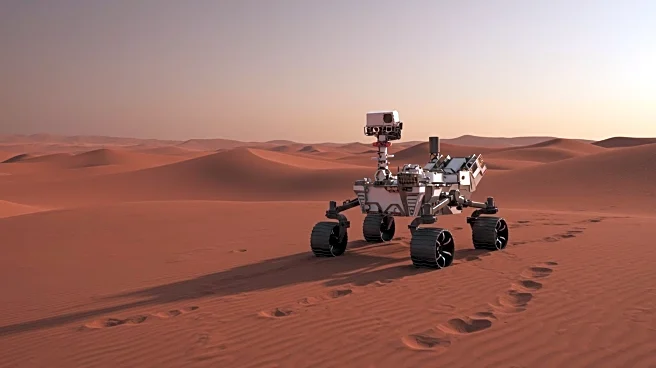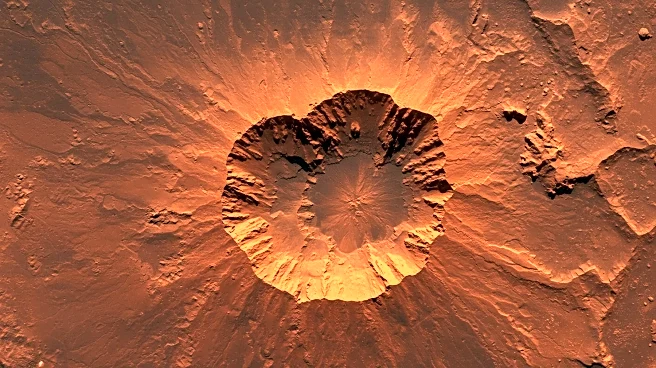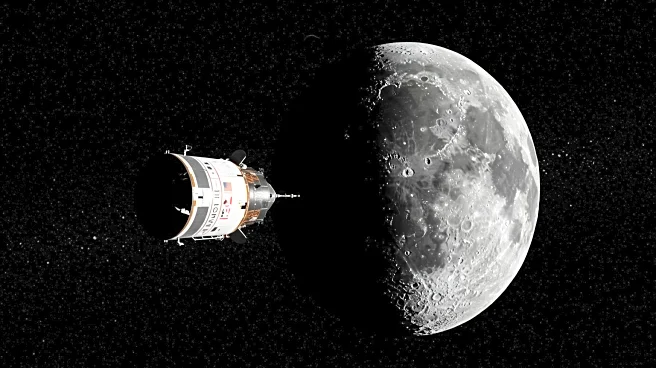Rapid Read • 7 min read
NASA's Perseverance rover has discovered a helmet-shaped rock on Mars, named Horneflya, composed primarily of spherules, which are tiny mineral formations. This discovery is attributed to wind erosion, a significant force shaping the Martian surface. The rover is currently studying Martian features like sand ripples to understand atmospheric dynamics both past and present. These studies are crucial for predicting future environmental conditions on Mars, which is essential for upcoming human missions. The findings provide valuable insights into Mars' geological history and ongoing surface changes, contributing to the broader understanding of the planet's environmental conditions over time.
AD
The discovery of Horneflya by Perseverance is significant as it enhances the understanding of Martian geology and the planet's environmental evolution. This knowledge is vital for future human exploration and potential colonization of Mars. Understanding wind erosion and its effects on the Martian surface can help scientists predict future conditions, which is crucial for planning human missions. The research also aids in understanding how natural forces have historically shaped Mars, offering a window into the planet's past and informing strategies for future exploration.
Perseverance will continue its exploration of Martian features, focusing on understanding the effects of wind erosion and other natural forces. These studies will inform future missions, including human exploration, by providing insights into the planet's environmental conditions. Scientists will analyze the data collected by Perseverance to refine predictions about Mars' future climate and surface changes, which are essential for planning sustainable human presence on the planet.
AD
More Stories You Might Enjoy










